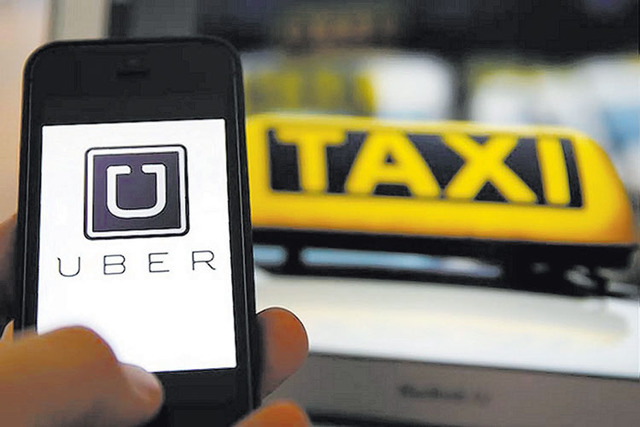Uber reaches out to Gov. Sandoval on state regulations

Gov. Brian Sandoval says his office has been contacted by representatives of Uber about finding a way to operate legally in the state, and he expects the ride-sharing company would have to work through the Nevada Taxicab Authority or the Nevada Transportation Authority, as would any applicant.
“They’ve reached out to my office, and there will be an initial meeting with my staff,” Sandoval said in a brief interview after a recent public appearance. “We’ll hear them out, there’s no doubt about that.”
The company began illegal operations in Southern Nevada on Oct. 24. Uber considers itself a ride-sharing technology company and not subject to the state’s ground transportation regulations.
The two agencies that regulate bus, limousine and taxi operations in the state have directed their enforcement officers to cite Uber drivers and impound their vehicles if caught transporting passengers. Court actions have failed to stop Uber from operating, but a judge said the company could continue to operate and regulators could cite drivers and impound their vehicles.
A spokeswoman for the Nevada Business and Industry Department said Monday that more than two dozen drivers have been cited for operating without a license.
Asked whether there’s a way for Uber to operate within the state’s existing regulatory structure, Sandoval said, “I haven’t gotten that far with that.”
“There will be initial discussions with my staff,” Sandoval said. “They’re going to have to go work with the Taxicab Authority and go through the regulatory process. I think they’re willing to do that. Personally, I have not had a conversation with any representative of Uber, but I think it’s important that we sit down with them and see where they’re coming from.”
In other cities and states, Uber has persuaded lawmakers to draft legislation creating a separate ride-sharing category enabling the company to operate under different rules from taxis and limousines.
Las Vegas Valley taxi company executives say that would give Uber an unfair advantage because cab companies are bound by regulations that require customers to pay charges assessed by a meter. Cab fares will soon rise from $3.30 for the initial drop to $3.45, 20 cents per one-thirteenth of a mile ($2.60 a mile) to 22 cents per one-thirteenth of a mile ($2.86 a mile) and wait-time charges of $30 an hour to $32.40 an hour.
Taxi companies also are required to bear the expense of vehicle inspections and driver background checks.
Uber prices vary by location but usually are 10 percent to 20 percent below local market rates. Uber, however, practices dynamic pricing — also known as “surge pricing” — which increases rates during peak-use periods. The Uber app notifies prospective riders when the higher rates are in effect. A company spokeswoman said there have been no instances of dynamic pricing in Southern Nevada since the company’s launch.
Sandoval also said it’s too early to tell whether special legislation for ride-sharing operations will be forthcoming.
“That would be speculation at this point,” Sandoval said. “Nobody’s talked to me about any proposed legislation. In all candor, I’m sure that will come up during the (legislative) session, but I haven’t seen any specific proposal.”